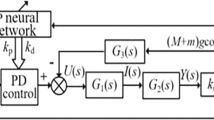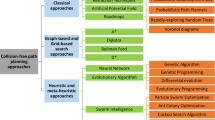Abstract
Industrial robots represent a promising, cost-saving and flexible alternative for machining applications. Due to the kinematics of a vertical articulated robot the system behavior is quite different compared to a conventional machine tool. The robot’s stiffness is not only much smaller but also position dependent in a non-linear way. This article describes the modeling of the robot structure and the identification of its parameters with focus on the analysis of the system’s stiffness. Therefore a method for the calculation of the Cartesian stiffness based on the polar stiffness and the use of the Jacobian matrix is introduced. Furthermore, so called virtual joints are used. With this method it is possible to model each joint of the robot with three degrees of freedom. Beside the gear stiffness the method allows the consideration of the tilting rigidity of the bearing and the link deformations to improve the model accuracy. Based on the results of the parameter identification and the calculation of the Cartesian stiffness the experimental model validation is done.




Similar content being viewed by others
References
Abele E, Weigold M, Rothenbücher S (2007) Modeling and identification of an industrial robot for machining applications. Ann CIRP 56(1):387–390
Albu-Schäffer A (2002) Regelung von Robotern mit elastischen Gelenken am Beispiel der DLR-Leichtbauarme. Dissertation, München
Caushi I (1992) Dynamische Einflüsse von Massen- und Steifigkeitsreduktionen auf die Bewegungsgrößen starrer und elastischer Industrieroboter. Dissertation, Wien
Hölzl J (1993) Modellierung, identifikation und simulation der dynamik von industrierobotern. Dissertation, München
Yoshikawa T, Hosoda K (1994) Modeling of flexible manipulators using virtual rigid links and passive joints. Int J Robot Res 15(3):290–299
Yoshikawa T, Matsudera K (1994) Experimental study on modeling of flexible manipulators using virtual joint model. Preprints of the Fourth IFAC Symposium on Robot Control, pp 669–674
Craig JJ (2005) Introduction to robotics: mechanics and control, 3rd edn. Pearson Education, Upper Saddle River
Sciavicco L, Siciliano B (1999) Modelling and control of robot manipulators, 2nd edn. Springer, London
Tsai L-W (1999) Robot analysis: the mechanics of serial and parallel manipulators. Wiley, London
Acknowledgments
The investigations were part of the research project Advocut. This research project was sponsored by the German Federal Ministry of Education and Research (BMBF) and was supervised by the Research Center Karlsruhe (PTKA).
Author information
Authors and Affiliations
Corresponding author
Rights and permissions
About this article
Cite this article
Abele, E., Rothenbücher, S. & Weigold, M. Cartesian compliance model for industrial robots using virtual joints. Prod. Eng. Res. Devel. 2, 339–343 (2008). https://doi.org/10.1007/s11740-008-0118-0
Received:
Accepted:
Published:
Issue Date:
DOI: https://doi.org/10.1007/s11740-008-0118-0




